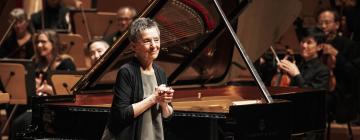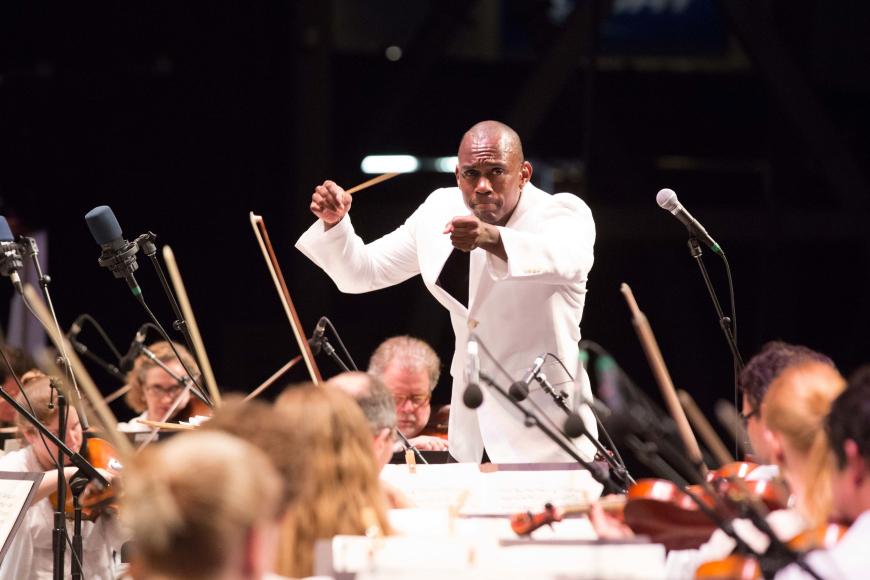
Normally the Hollywood Bowl is a place for escape — especially during the doldrums of August, when the weather is hot, the living is easy, and the programming is often tried, true, and safe. Not so on Aug. 18.
The Bowl season brochure gave Thursday night’s concert the rather laconic title “All American” — which, in this vast populist amphitheater, would once have signaled a night of Leonard Bernstein, Aaron Copland, George Gershwin, maybe a little Samuel Barber. But Davóne Tines, the bass-baritone who has been making a big splash in critical circles for coming up with socially conscious programs with a deeply personal stamp, had a different agenda in mind — and the performance had been renamed “American Stories.”
And he wasn’t the only one. The guest conductor du jour, Joseph Young — the surprise choice to head Berkeley Symphony in 2019, with his contract extended in July through 2025 — had another alternative American story for the Los Angeles Philharmonic to play.
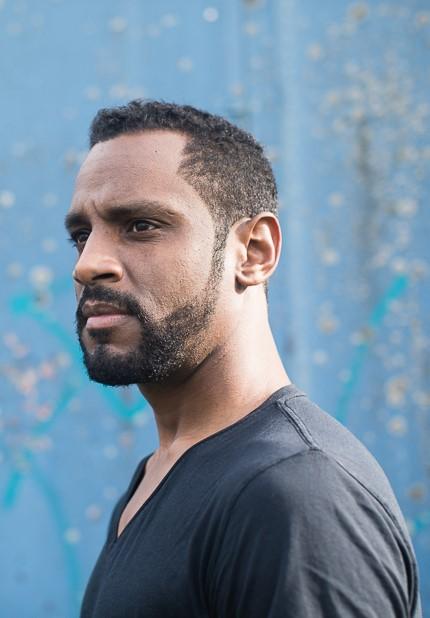
First there was the obligatory national anthem — done straight as always but, in this new context, an ironic preamble to what was about to unfold. Then Young led Carlos Simon’s narrative cantata Portrait of a Queen, tracing the life and subsequent family history of an African queen sold into slavery, with her descendants enduring Jim Crow apartheid in the American South, and ultimately celebrating the uplifting roles of Black women and the Black Pentecostal Church in four continuous movements. Simon uses pentatonic African scales to represent the continent in the idyllic, even nostalgic first section. Tension enters the music when the slave ship journey begins, and the Jim Crow era ignites a furious scherzo with dynamic percussion and palms-down slamming on the piano keys. The last section is mostly lyrical, with a grand peroration and quiet prerecorded voices offering prayers over the last notes.
Actress Debbie Allen, in regal garb, made a slow, dignified walk across the expansive Bowl stage, the way the late Jessye Norman used to make her entrances, Allen’s voice rising fervently when she intoned the words, “THEIR LIVES MATTER.” There is enough raw material in a multigenerational saga like this to occupy an entire evening, if not several evenings, but Simon did it with admirable concision in a mere 18 minutes.
For Tines, “The Star-Spangled Banner” served as a polemical jumping-off point for the LA Phil-commissioned world premiere of what he calls Concerto No. 2: Anthem. It’s really a novel hybrid of musical forms for voice and orchestra, structured like a concerto in three movements yet sounding like a cantata and playing through like a song cycle. On top of that, it’s a work by musical committee (plus a few words by Mahogany L. Browne), a practice that seems to be catching on among younger composers who by and large don’t mind being a collegial lot.
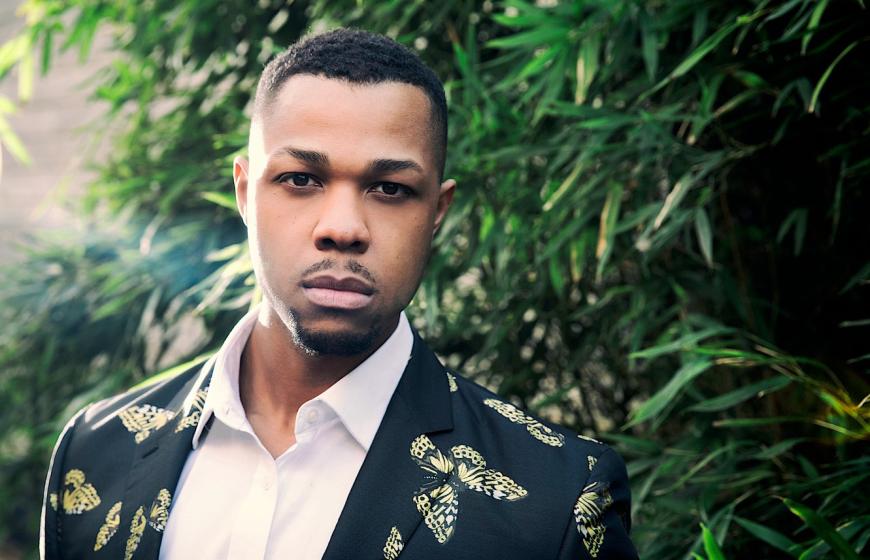
In setting the table, composer Michael Schachter had Tines powering his way through the first verse of the national anthem in a star-spangled, reharmonized setting that goes way beyond where Igor Stravinsky went in his once-controversial version, ending on a jazzy sixth chord that collapses into nothing. Then we heard the anthem’s rarely performed, increasingly violent second and third verses — a fizzing orchestration for the former and a mad mock-Sousa march for the latter — sparing us the imperialistic fourth verse, the point having been made.
Caroline Shaw took on the setting of the second movement, in which the Quaker tune “Simple Gifts” interacts with competing versions of “Dixie,” which in turn give way to “God Bless America” entwined with racist minstrel songs. Shaw is good at the art of ironic juxtaposition, though understandably didn’t employ her humorous streak this time.
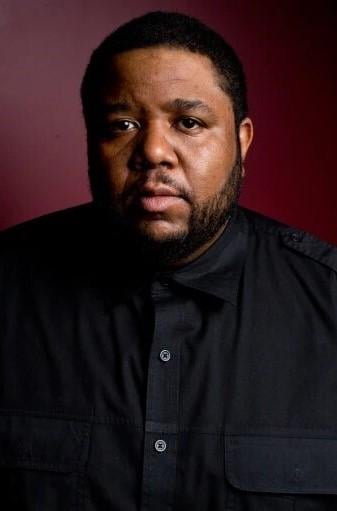
Finally it was up to Tyshawn Sorey in the third movement to have Tines propose “Lift Every Voice and Sing” — sometimes called the Black national anthem — as a new, universal national anthem, one without conquest and victimization, even though the rhetoric became grandiose and overblown in the cinematic conclusion. Tines was treading upon third-rail territory here: “The Star-Spangled Banner” is so ingrained in the concrete walkways of the Bowl that a move years ago to eliminate it from concerts caused a firestorm of ferocious patriotic protest. Maybe the Bowl ought to feature two anthems, like they do when the Israel Philharmonic plays there — the “Banner” for traditionalists and something else for those wanting another point of view. Tines made his case in big, deep, robustly opulent voice, even abandoning his music stand during “Lift Every Voice” to roam the stage singing out.
After intermission, it was Aaron Copland’s turn to tell another, maybe not-quite-as-timely American story, Billy the Kid. But this was no ordinary Billy the Kid, for Young took the trouble to conduct a rare performance of the entire 34-minute ballet score instead of the usual 20-minute suite. The added music is mainly lodged in between the “Street Scene” and “Card Game at Night” and between “Celebration After Billy’s Capture” and “The Open Prairie Again” — and the “Gun Battle,” which came off resoundingly in the Bowl, is somewhat more extended in the complete score.
Although I tend to agree with Copland’s editorial decisions — the cut passages do not come up to the level of those in the suite, nor do they alter the mood and thrust of the piece as the deleted sections of Appalachian Spring do — it’s good to hear how the whole thing fits together now and then. Young got the orchestra snapping out of any hint of the August doldrums, even on short rehearsal time.
The times really are a-changin’ in Daisy Dell.
